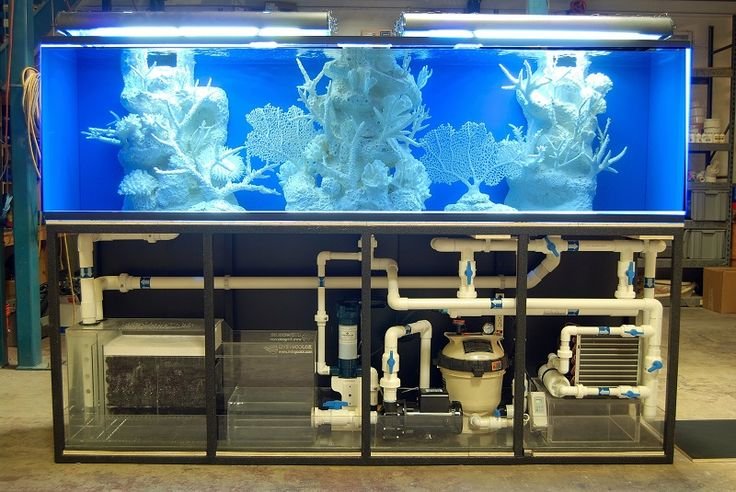Aquariums are a beautiful addition to any home, offering a serene and calming environment while allowing you to enjoy the fascinating lives of your fish. However, keeping a fish tank clean can be a time-consuming and labor-intensive task, especially when it comes to maintaining water quality. Regular water changes, cleaning the substrate, and ensuring the filter is working efficiently are essential tasks to keep the aquarium in good shape.
A self cleaning fish tank filter is a revolutionary product that can simplify the maintenance process and help you maintain a clean and healthy environment for your fish with minimal effort. In this article, we’ll explore how self-cleaning fish tank filters work, their benefits, and why they’re an excellent investment for aquarium owners.
What is a Self-Cleaning Fish Tank Filter?
A self-cleaning fish tank filter is a filtration system designed to automatically clean itself, reducing the need for frequent manual maintenance. These filters use innovative technology to help remove debris, waste, and harmful chemicals from the water, ensuring that your aquarium remains clean and clear without requiring constant attention. Self-cleaning filters typically use mechanical, biological, and chemical filtration methods to keep the water healthy and free from toxins that could harm your fish.
The self-cleaning function of these filters often involves a mechanism that helps remove built-up dirt and debris from the filter media without needing to be taken apart and cleaned manually. This can significantly reduce the time and effort required to maintain the filter, allowing for a cleaner tank with minimal intervention.
How Does a Self-Cleaning Fish Tank Filter Work?
Self-cleaning filters use a combination of methods to keep the aquarium water pristine. Here’s a breakdown of how they generally function:
- Automatic Filter Media Cleaning: The most notable feature of a self-cleaning filter is its ability to clean the filter media on its own. Many self-cleaning filters have an automatic backflushing system that reverses the water flow, dislodging trapped debris and waste from the filter media. The waste is then expelled from the filter, often through a waste outlet, and the filter media is left clean and ready to continue its filtration process.
- Efficient Filtration Process: Like traditional filters, self-cleaning filters use mechanical, biological, and chemical filtration to remove impurities from the water:
- Mechanical Filtration: This removes large particles like fish waste, uneaten food, and debris.
- Biological Filtration: Beneficial bacteria break down harmful toxins like ammonia and nitrites, converting them into less harmful substances.
- Chemical Filtration: Activated carbon or other chemical media help remove dissolved toxins, odors, and discoloration from the water.
- Ease of Maintenance: Many self-cleaning fish tank filters are designed to minimize manual intervention. Some filters have self-cleaning functions that activate automatically on a timer or when water flow is reduced. Others may require manual activation, but the process is still far more convenient than disassembling the entire filter and cleaning it by hand.
- Pre-Filters and Waste Collection: Some self-cleaning filters feature pre-filters that capture large particles before they reach the main filter. These pre-filters often have easy-to-remove trays that can be emptied without removing the entire filter, making maintenance more convenient.
Benefits of a Self-Cleaning Fish Tank Filter
There are numerous advantages to using a self-cleaning fish tank filter, which can make your aquarium maintenance routine much easier. Here are the key benefits:
- Less Frequent Cleaning: Self-cleaning filters require less frequent cleaning, as they maintain their effectiveness in keeping the tank water clear and clean. This reduces the need for regular filter maintenance, saving you time and effort.
- Improved Water Quality: A self-cleaning filter ensures that the water in your aquarium remains of high quality. It removes debris, excess nutrients, and harmful chemicals from the water, creating a healthier environment for your fish.
- Convenient and Low-Maintenance: Traditional filters require disassembly and manual cleaning, which can be messy and time-consuming. Self-cleaning filters eliminate this task, allowing you to simply turn on the filter and let it do its job.
- Reduced Stress on Fish: A cleaner aquarium is not only beneficial for the water quality but also for the overall health of your fish. Reducing the frequency of water changes and minimizing the risk of polluted water can lead to less stress for your aquatic pets and a healthier environment.
- Consistent Filtration: Since the filter is continuously maintaining itself, you won’t have to worry about decreased performance due to clogged filter media. This ensures that your aquarium receives consistent and reliable filtration, keeping the water quality stable.
- Time-Saving: For busy aquarium owners, a self-cleaning filter saves considerable time and effort that would otherwise be spent cleaning and maintaining the filter manually. It allows you to focus on other aspects of aquarium care or simply enjoy watching your fish.
Things to Consider When Choosing a Self-Cleaning Filter
While self-cleaning filters offer great convenience, there are a few factors to consider before purchasing one:
- Tank Size: Make sure to choose a self-cleaning filter that is appropriate for the size of your aquarium. Filters come in various capacities, so select one based on the tank’s gallonage to ensure optimal filtration.
- Filter Type: Consider the type of filtration you need for your aquarium. Some self-cleaning filters may only focus on mechanical filtration, while others provide biological and chemical filtration as well. Make sure the filter you choose matches your tank’s specific needs.
- Noise Level: Some filters, especially those with automatic backflushing systems, may produce noise during operation. If noise is a concern for you, look for filters that operate quietly or are designed to reduce sound.
- Cost: While self-cleaning filters offer convenience, they tend to be more expensive than traditional filters. Take your budget into account when making a decision.
- Maintenance Schedule: Although these filters are designed to clean themselves, they may still require occasional maintenance, such as cleaning the pre-filter or replacing filter media. Make sure to follow the manufacturer’s instructions for upkeep.
Where to Buy a Self-Cleaning Fish Tank Filter
Self-cleaning filters are available from many reputable aquarium supply stores, both online and in physical stores. Some popular online retailers that carry these filters include:
- Amazon: A wide selection of self-cleaning filters from well-known brands like Fluval, AquaClear, and Eheim.
- Chewy: Offers a range of filters with self-cleaning features for both freshwater and saltwater tanks.
- Petco and PetSmart: Both physical and online stores carry various self-cleaning aquarium filters from trusted brands.
Conclusion
A self-cleaning fish tank filter is a game-changer for aquarium enthusiasts, simplifying the maintenance process and ensuring cleaner, healthier water for your fish. These filters reduce the frequency of manual cleaning, maintain water quality consistently, and save time for busy pet owners. If you’re looking to make aquarium care easier and more efficient, investing in a self-cleaning filter can be an excellent decision. By choosing the right filter for your tank size and needs, you can enjoy a cleaner aquarium with minimal effort and maximum convenience.



